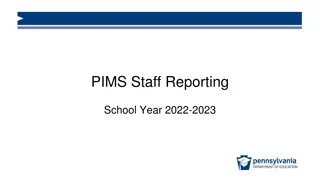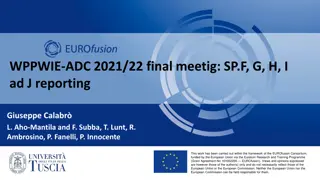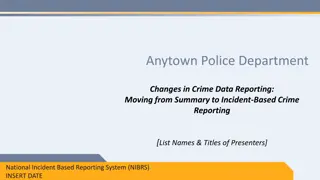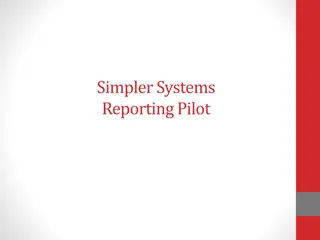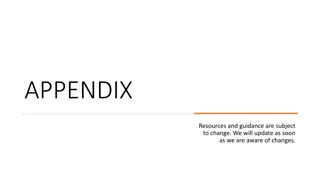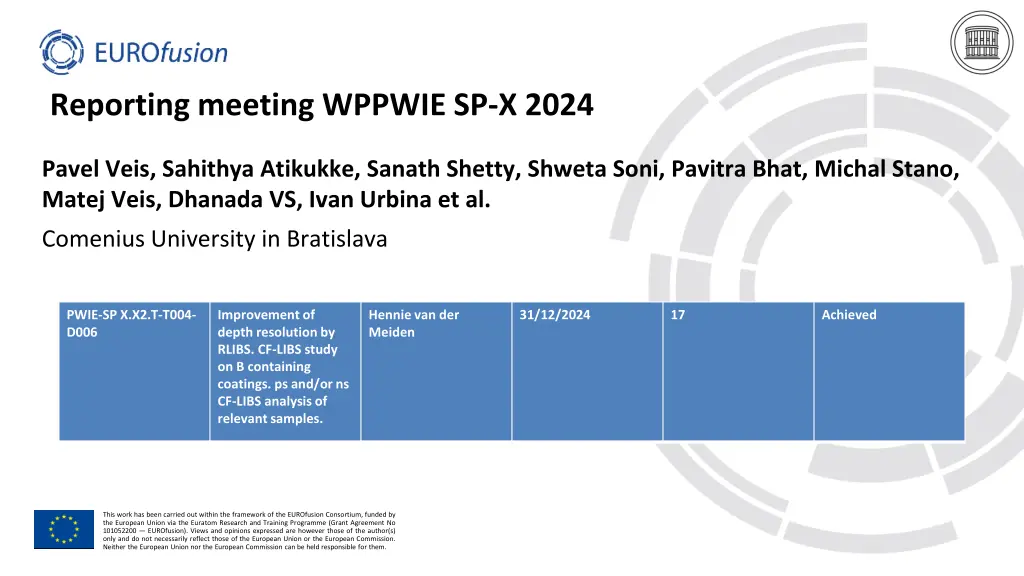
Advanced Depth Profiling Techniques in Laser-Induced Breakdown Spectroscopy (LIBS)
Explore the advancements in depth profiling using Resonant-LIBS and ps-LIBS techniques, showcasing improved resolution and analysis of B-containing coatings. Lev-LIBS for future Boron analysis. This work, sponsored by EUROfusion, delves into the realm of high-precision laser spectroscopy for materials characterization.
Download Presentation

Please find below an Image/Link to download the presentation.
The content on the website is provided AS IS for your information and personal use only. It may not be sold, licensed, or shared on other websites without obtaining consent from the author. If you encounter any issues during the download, it is possible that the publisher has removed the file from their server.
You are allowed to download the files provided on this website for personal or commercial use, subject to the condition that they are used lawfully. All files are the property of their respective owners.
The content on the website is provided AS IS for your information and personal use only. It may not be sold, licensed, or shared on other websites without obtaining consent from the author.
E N D
Presentation Transcript
Reporting meeting WPPWIE SP-X 2024 Pavel Veis, Sahithya Atikukke, Sanath Shetty, Shweta Soni, Pavitra Bhat, Michal Stano, Matej Veis, Dhanada VS, Ivan Urbina et al. Comenius University in Bratislava PWIE-SP X.X2.T-T004- D006 Improvement of depth resolution by RLIBS. CF-LIBS study on B containing coatings. ps and/or ns CF-LIBS analysis of relevant samples. Hennie van der Meiden 31/12/2024 17 Achieved This work has been carried out within the framework of the EUROfusion Consortium, funded by the European Union via the Euratom Research and Training Programme (Grant Agreement No 101052200 EUROfusion). Views and opinions expressed are however those of the author(s) only and do not necessarily reflect those of the European Union or the European Commission. Neither the European Union nor the European Commission can be held responsible for them.
Resonant-LIBS This study explores Resonant Laser-Induced Breakdown Spectroscopy (RLIBS) for depth profiling. A key advantage of RLIBS over conventional LIBS is its reduced ablation rate, leading to higher-resolution in-depth profiles. Depth profiling conducted using a tunable EKSPLA NT342C nanosecond laser system.Laser range: 210 2600 nm; energy levels at 2 mJ per pulse (UV). Tungsten and Tantalum-coated Mo substrate used as sample. Laser tuned to 255.14 nm for resonant W I transition and 222.75 for off- resonant ablation. Depth profiling comparison: - Resonant condition requires ~90 laser shots to reach substrate - Off-resonant condition requires ~30 laser shots Ablation rate observed: - Resonant: 0.09 m/pulse - Off-resonant: 0.248 m/pulse RLIBS demonstrates greater depth resolution compared to conventional LIBS S. Atikukke et al., NME, 2024 2 P.Veis, Sahithya Atikukke et al.| WPPWIE SP-X reporting | 13 November 2024
Depth profiling with ps-LIBS Samples: - EU2 72, EU2 73 (WTa coatings on Mo) - EU2 75 (WTa+D coating on Mo) Experimental Setup: - Chamber pressure: 5 0.2 mbar, Argon gas - Picosecond Nd:YAG laser at 532 nm (29 4 ps pulse duration) - Two laser energies tested: 1 mJ and 3 mJ Depth profiling using GDOES and LIBS techniques for layer thickness Confocal microscopy was used to analyze crater dimensions formed by ps-LIBS Ablation rates: - EU2 72: 0.133 m/pulse (1 mJ), 0.28 m/pulse (3 mJ) - EU2 73: 0.131 m/pulse (1 mJ), 0.178 m/pulse (3 mJ) S. Soni et al., SCAB, 2024 3 P.Veis, Sahithya Atikukke et al.| WPPWIE SP-X reporting | 13 November 2024
Lev- LIBS Boron Analysis for future thing Boron LIBS analysis The acoustic levitation system was employed for making analysis in H3BO3. The solutions were prepare from a mother solution 0.099M. The doublet recorder by the detector are show below. H3BO3(ac) 20mM DT = 1 s GT = 3 s H3BO3(ac) 1mM DT = 1 s GT = 3 s Deliverable: PWIE-SP X.X2.T-T004-D006 Status: completed / partially done / in progress / delayed / cancelled Facilities: or Modelling: Linked WP or TSVV: The acoustic levitation system. (Lev-LIBS) P.Veis, Sahithya Atikukke et al.| WPPWIE SP-X reporting | 13 November 2024





